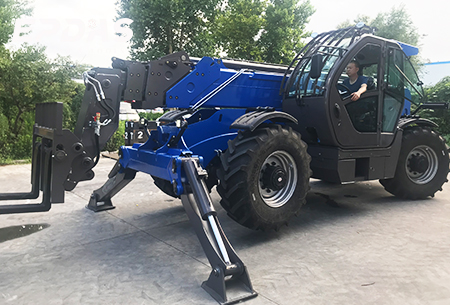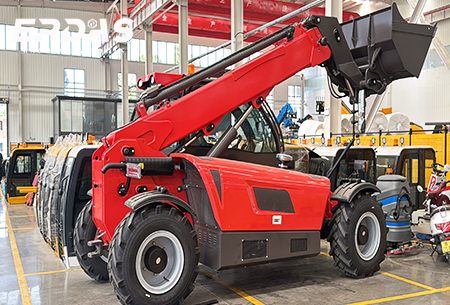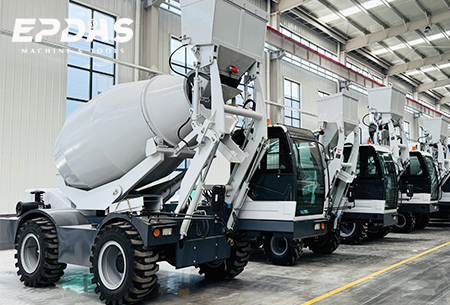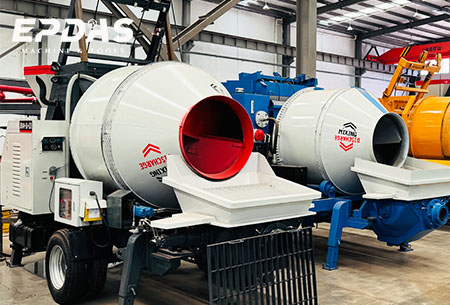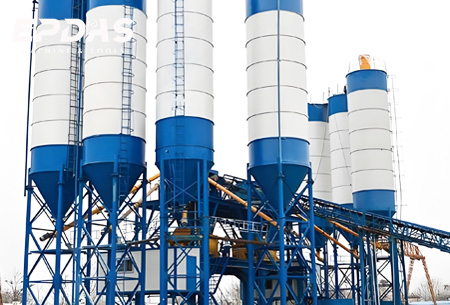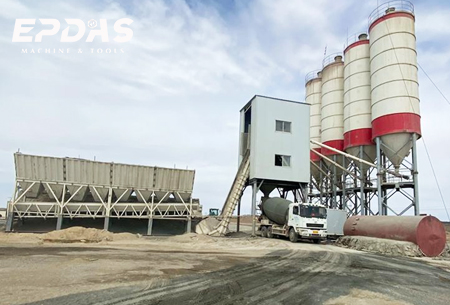In the construction industry, concrete is the cornerstone of most projects. From towering skyscrapers and bridges spanning rivers to ordinary sidewalks and residential buildings, concrete is an indispensable material. Traditional concrete supply models face challenges such as transportation timeliness and cost losses.
The emergence of the new mini MCBP mobile concrete batch plant is the perfect response to the construction industry’s demand for flexible and efficient production. Understanding its features and operational mechanisms can help construction professionals and contractors make more informed decisions in project planning.
This integrated equipment combines mixing, transportation, and pumping functions into one unit. It enables free movement within construction sites via a vehicle-mounted chassis, thereby breaking through site-related constraints in concrete production.
Exploring its modular design, intelligent control system, and eco-friendly energy-saving features not only provides construction professionals with optimized construction solutions but also helps contractors gain a competitive edge in the market through more scientific decision-making.
The mini MCBP mobile concrete batching plant is a portable, modular device whose core function is to mix various raw materials into concrete at construction sites. These raw materials primarily include water, air, cement, aggregates (such as sand, gravel, or crushed stone), and admixtures (chemical substances used to alter concrete properties).
Unlike fixed mixing plants, it is specifically designed for easy transportation, enabling seamless relocation to different construction sites, thereby providing construction projects with exceptional flexibility and efficiency. Additionally, it is the most advanced and cost-effective mobile batching plant among all mini mobile mixing plants.
The mixing plant features a trailer-mounted design, equipped with a high-strength steel chassis and hydraulic lifting legs, enabling rapid installation and dismantling within 48 hours. No permanent foundation is required, significantly reducing installation and dismantling time.
Through an integrated cable storage system and quick-connect piping technology, the equipment can be transported by simply disconnecting the interfaces, retracting the legs, and towing it with a tractor, significantly reducing relocation costs.
For temporary construction projects or locations with space constraints or municipal regulations restricting equipment height, the compact MCBP batching plant is the ideal choice.
In projects with limited space, such as urban rail transit construction or old urban area renovations, the equipment adopts a low-center-of-gravity, flat layout, with the overall height controlled below 4.5 meters, complying with municipal road height restrictions.
Additionally, the equipment is equipped with an intelligent leveling system that can automatically level itself on slopes with a gradient of ±15°, enabling stable operation even in complex terrains such as mountains and hills. This truly achieves “ready to use upon arrival, move as needed,” making it an ideal solution combining mobility and flexibility in the field of engineering construction.
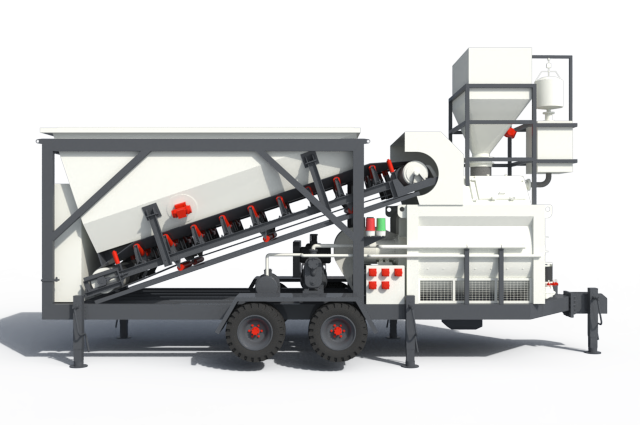
Its production capacity ranges widely, with hourly output typically between 25 cubic meters and 100 cubic meters, and some high-performance models capable of reaching up to 350 cubic yards per hour. The mixing plant is equipped with an automated control system that precisely mixes raw materials, ensuring consistent and reliable quality for each batch of concrete.
Its production capacity exhibits a significant gradient characteristic. The basic models maintain a stable hourly output of 25 cubic meters, suitable for the daily needs of small to medium-sized projects; high-performance models increase capacity to 35–50 cubic meters, ideal for medium-sized infrastructure projects such as urban roads and bridges.
The industrial-grade PLC automated control system on the small MCBP mixing plant integrates high-precision weighing sensors and intelligent mixing algorithms to achieve ±1% precise measurement of raw materials such as cement, sand and gravel, water, and admixtures.
Combined with real-time data monitoring modules, the system can dynamically adjust mixing ratios based on environmental temperature and humidity, aggregate moisture content, and other parameters, ensuring that concrete strength standard deviation is controlled at the industry’s optimal level under various working conditions, effectively mitigating quality fluctuations caused by human operational errors.
In terms of operating modes, the compact MCBP portable concrete plant supports both dry mixing and wet mixing methods, each with its unique advantages and applicable scenarios.
In dry mixing mode, concrete raw materials (cement, aggregates, additives, etc.) are pre-mixed at the batching plant to form uniform dry material, which is then loaded into transport vehicles equipped with mixing functionality. During transportation, the mixer truck precisely adds water according to the set ratio and mixes the materials until the concrete achieves the required workability for construction.
This mode effectively avoids concrete segregation issues during long-distance transportation and is particularly suitable for projects with long transportation distances and strict requirements for concrete initial setting time.
The wet mixing mode involves mixing all raw materials (cement, aggregates, water, admixtures, etc.) at the mini batching plant according to precise proportions in the main mixer, using high-speed rotating mixing blades to thoroughly mix them until a uniform, well-workable concrete mixture is formed, which is then loaded into transport vehicles.
This mode enables strict control over concrete quality, ensuring consistent strength and workability across each batch. It is commonly used in projects with high concrete quality requirements and short transportation distances, such as the centralized supply of ready-mix concrete and small-scale construction sites.
The EPDAS MCBP series of compact small concrete batch plants includes several core models, such as the MCBP25, MCBP35, and MCBP50, each designed to meet the specific needs of different-scale construction projects and job sites.
MCBP25
This model features a twin-shaft forced-action mixer as its core component, utilizing variable frequency speed control technology to precisely regulate mixing speed, delivering a steady output of 25 cubic meters of concrete per hour.
The equipment occupies only 12 square meters of floor space. Its highly integrated vehicle-mounted chassis design allows it to easily navigate narrow alleys with a height restriction of 3 meters. The MCBP25 can complete concrete pouring alongside circular foundation pits with a diameter of less than 5 meters, saving 60% of the site area compared to traditional equipment.
The intelligent metering system maintains an error rate of ±1%, ensuring quality standards for small-scale projects while enabling rapid site relocation for multi-site operations.
MCBP35
As the main model for medium-sized projects, the MCBP35 mobile concrete batching plant is equipped with dual spiral conveyors and a three-stage aggregate weighing system, maintaining a production capacity of 35 cubic meters per hour while enabling the production of concrete of all grades.
The equipment features a hydraulic folding support structure, allowing it to transition from transport mode to fully operational status in just 45 minutes, improving installation efficiency by 40% compared to similar products.
The unique self-cleaning mixing shaft design reduces residual concrete cleanup time to 5 minutes, effectively lowering downtime maintenance costs, and making it ideal for time-sensitive municipal projects and multi-story residential construction projects.
MCBP50
As the highest-output, high-capacity equipment, the MCBP50 is equipped with a diameter mixing main unit and dual belt conveyors, enabling continuous, uninterrupted operation. The modular design allows for quick replacement of worn parts, and the mixing blades are made of high-chromium alloy material, offering three times the wear resistance.
For complex material requirements in large-scale projects, the equipment is equipped with a four-bin batching system, enabling precise addition of special admixtures such as mineral powder and fibers, meeting the production requirements for ultra-high-rise pumped concrete and large-volume crack-resistant concrete.
All three models adopt industrial-grade modular design, with functional units assembled quickly via standardized interfaces. A single unit can be installed by two technicians with a crane in just six hours.
Using the MCBP series mixing plants reduces labor requirements by 35%, shortens equipment relocation and installation time by an average of 70%, and significantly improves concrete supply efficiency and cost control capabilities at construction sites.

Concrete batching plants are primarily divided into two categories: mobile and fixed. Although their operational processes, procedures, and maintenance routines are similar, there are significant differences in their application scenarios.
The advantages of the small MCBP mobile concrete batching plant lie in its ease of relocation, quick installation, and convenient disassembly, making it ideal for temporary or remote construction sites.
In contrast, fixed-type batching plants offer higher production capacity, with a maximum hourly output of up to 240 cubic meters, making them more suitable for long-term, large-scale construction projects. The choice between the two types ultimately depends on the specific requirements and scale of the project.
| Feature | Mobile Concrete Plant | Stationary Concrete Plant |
| Flexibility | High degree of flexibility, rapid transfer and installation, and remarkable adaptability | Low degree of flexibility, and relatively fixed position |
| Equipment Structure | Compact to meet the needs of different scales | Large size, multiple equipment combination and fixed foundation required |
| Production Capacity | Customized to meet the needs of different scales | Suitable for largr-scale and continuous production |
| Installation and Disassembly | Simple and quick, saving both time and efforts | Relatively complicated, time-consuming and labor-intensive |
| Applicable Scenarios | Small to medium-sized projects in remote and temporary locations | Large-scale, long-term and centralized production scenarios |
| Investment Cost | Low, sutable for small and medium investors | High, suitable for large or long-term operators |
![]() Cost-Effective
Cost-Effective
Producing concrete directly at the construction site significantly reduces concrete transportation costs. Compared to fixed batching plants, the small MCBP mobile concrete batching plant saves customers a significant amount of time and labor costs while fully meeting concrete production requirements.
![]() Efficient and Convenient
Efficient and Convenient
The equipment can be quickly installed and dismantled, with the entire process from transportation to production completion achievable within a few hours. Its flexible mobility allows the mixing plant to be swiftly relocated to different construction sites, effectively accelerating project progress.
![]() Automated Precision Control
Automated Precision Control
The fully automated operating system ensures precise and error-free material mixing, maintaining consistent concrete mixing quality. Regardless of the required mix ratio, precise implementation is guaranteed, ensuring engineering quality.
![]() Wide Application
Wide Application
The small MCBP mobile mixing plant has a wide range of applications, suitable not only for various construction projects but also commonly equipped in commercial concrete mixing plants to produce multiple types of concrete simultaneously.
![]() Excellent Mixing Performance
Excellent Mixing Performance
The main mixing equipment uses the JS series double-shaft forced-action mixer, featuring high mixing uniformity and fast production efficiency. It can achieve high-quality mixing of various concrete mix ratios, including dry mix, semi-dry mix, and plastic mix, within an optimal timeframe.
![]() User-Friendly Operation
User-Friendly Operation
Compared to commercial concrete batching plants, the compact MCBP mobile batching plant requires fewer components and occupies a smaller footprint. This makes it more convenient to operate on construction sites and allows for greater flexibility in selecting equipment placement locations.
♦ Towing Unit
As one of the core components of a mobile concrete mixing plant, the towing unit primarily ensures that the equipment can be easily moved and installed. A standard towing unit includes a chassis, tires, a towing hook, and a braking system.
The chassis provides stable support, the tires enable mobility, the towing hook connects to the transport vehicle, and the braking system ensures safety during transportation.
♦ Aggregate System
The aggregate batching system is used to precisely mix various aggregates (such as sand, gravel, etc.) to ensure the quality and strength of concrete. It typically features multiple batching hoppers, with each material weighed independently to ensure accurate proportions.
The aggregate conveying system transports the mixed aggregates to the mixer via a conveyor belt. The two belts are 500mm wide, and the belt conveyor offers advantages such as high production efficiency, long conveying distance, stable performance, and low maintenance costs.
♦ Main System
The mixing shaft is made of a solid shaft, providing better rigidity and ensuring that the shaft end seal clearance remains within the design range. The mixing arms, blades, and liners are all bolted together, making it easy to adjust the clearance and perform maintenance or replacement. The liners and blades are made of high-chromium wear-resistant material.
The shaft end seal features a patented design, with an additional labyrinth seal inside the tank to prevent leakage under normal maintenance conditions. The shaft-mounted reducer has a compact structure, low noise, and minimal vibration, causing less interference with the powder, water, and admixture metering systems, thereby improving metering accuracy.
The motor and reducer are connected via a V-belt flexible coupling. When the mixing system is overloaded, this design effectively protects the reducer, mixing arms, blades, and shaft end, ensuring zero impact, reducing overload maintenance costs, and extending the service life of the mixing system.
The electric thick oil pump provides a precise, automatic oil supply, ensuring the effectiveness of the shaft end seal while reducing costs. The main machine door limit switch is non-contact, making it easy to adjust and ensuring a longer service life.
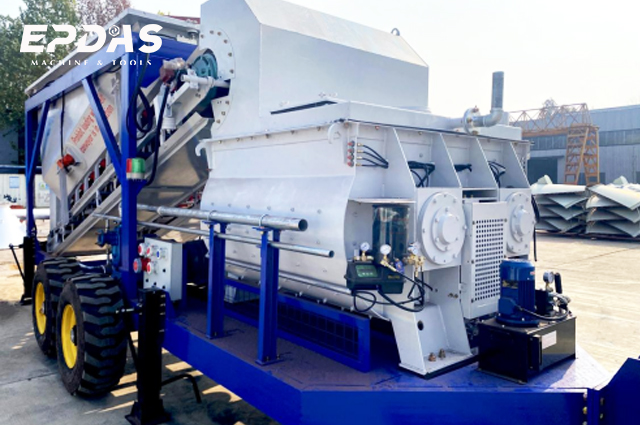
♦ Powder Material System
The powder material storage system uses sealed silos to store cement, fly ash, and other powdered materials, effectively maintaining material dryness and preserving their quality. Mobile mixing plants often use removable storage silos for convenient transportation and on-site installation.
The silo panels are manufactured using molded stamping technology, with flanged edges around the perimeter to enhance structural strength and improve sealing performance.
The powder conveying system primarily employs screw conveyors, which use rotating blades to continuously transport materials, ensuring stable and efficient powder conveying.
♦ Weighing System
The weighing system includes modules for aggregate weighing, filler weighing, water weighing, and admixture weighing. Aggregates are either cumulatively measured using an electronic scale or weighed individually, while cement, water, and admixtures are precisely measured using weighing hoppers.
Water is pumped into the mixer using a pressure pump. The admixture tanks are made of PE material, corrosion-resistant, with a larger capacity of 1.5 cubic meters, and feature a circulation anti-settling function. High-precision sensors ensure the accuracy of weighing results.
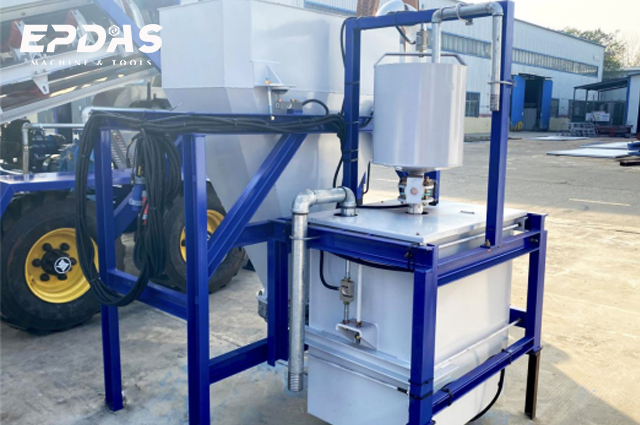
♦ Mixing System
The mixing system is the core of the batching plant, responsible for mixing raw materials in the correct proportions into uniform concrete.
The equipment is typically equipped with JS series twin-shaft concrete mixers, capable of achieving high-quality mixing in the shortest time, suitable for various types of concrete such as dry, semi-dry, and plastic.
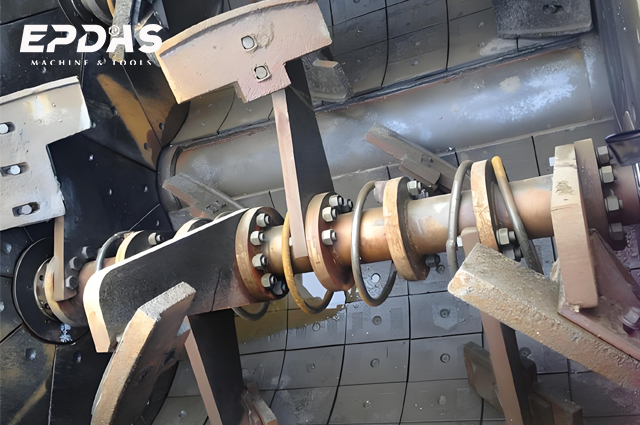
♦ Pneumatic System
Equipped with high-displacement piston air compressors, the pneumatic system ensures efficient operation and rapid, precise cylinder movement.
Utilizing compressed air as its power source, the pneumatic system controls various pneumatic actuators within the mixing plant, such as the opening and closing of cement silo butterfly valves, ensuring efficient equipment operation.
Its low cost and pollution-free characteristics make it an ideal choice for the mixing plant’s power system.
♦ Electronic Control System
As the “brain” of the entire mixing plant, the electronic control system monitors and manages the entire production process from raw material mixing to finished product discharge.
Mixing plants equipped with PLC control systems display the operational status of all components via dynamic panels, and feature data storage, output, and statistical report printing functions. They can also complete batch production tasks according to schedule.
Motors are equipped with overload and short-circuit protection, providing effective protection for external equipment.
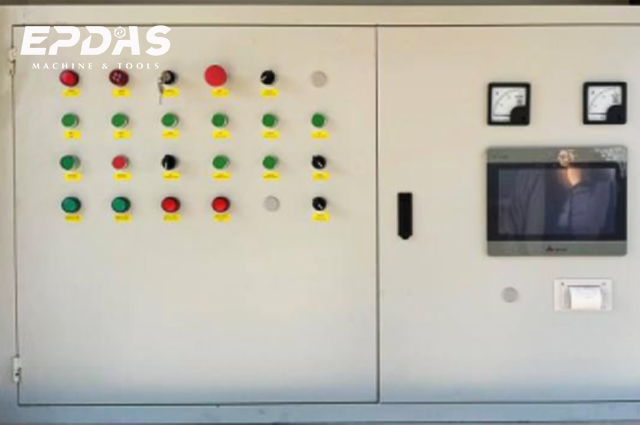
Raw Material Preparation
According to project requirements, raw materials such as cement, aggregates, and admixtures are stored in their respective warehouses. Strict quality control is maintained for all raw materials to ensure compliance with relevant standards and specifications.
Weighing and Batching
The control system instructs the material weighing system to precisely measure each raw material based on the predefined mix ratio. After weighing is complete, the raw materials are conveyed to the mixing main unit via the conveying system.
Mixing Process
Start the mixer to thoroughly blend the raw materials such as cement, aggregates, and water. During mixing, the blades inside the mixer continuously rotate to ensure uniform and thorough mixing of the materials. The speed and time parameters of the mixing main unit can be flexibly adjusted according to the type of concrete and project requirements.
Discharge and Transportation
The mixed concrete is discharged through the discharge port and transported to the construction site by concrete mixer trucks or pumping equipment. During transportation, measures must be taken to maintain the uniformity and flowability of the concrete, preventing segregation, bleeding, and other phenomena.
Standardized Operations: Strictly follow the operating guidelines and manuals provided by the equipment manufacturer to ensure safe operation and normal functioning of the equipment.
Regular Maintenance: Conduct regular inspections and maintenance of all components of the mixing plant to promptly identify and address potential issues. Professional after-sales service provides reliable support for equipment operation.
Site Management: Maintain a clean and orderly work area around the mixing plant to prevent safety accidents caused by accumulated debris and ensure efficient equipment operation.
Environmental Monitoring: Closely monitor environmental conditions such as temperature and humidity, as these factors can affect concrete performance.
Environmental Compliance: Adhere to local regulations regarding air and water pollution control, and actively implement dust suppression, noise reduction, and water-saving measures.
Some mixing plants are equipped with environmental protection systems that integrate dust removal, recycling, energy-saving, and noise-reduction technologies, and they are capable of meeting the environmental requirements of various projects.
Application Areas of Mini MCBP Concrete Batching Plants
Construction Engineering
Widely used in various construction projects, it is employed to produce construction materials such as concrete blocks, beams, columns, and floor slabs. The high-strength, high-quality concrete produced by the mixing plant effectively ensures the safety and quality of construction projects.
Road Engineering
In road construction, it is primarily used to produce materials such as concrete pavements, drainage ditches, and slope protection. Ensuring the high strength and quality of road construction materials helps enhance the service life and safety performance of roads.
Bridge Engineering
In bridge construction, concrete batching plants are used to produce concrete for bridge piers, buffer blocks, bridge decks, and other components. High-quality concrete materials significantly improve the service life and safety performance of bridges.
Water Conservancy Engineering
In various water conservancy projects such as dam construction, water channel excavation, hydropower station construction, and river channel projects, small MCBP concrete batching plants play a crucial role. They significantly enhance concrete pouring efficiency and effectively shorten the construction cycle.
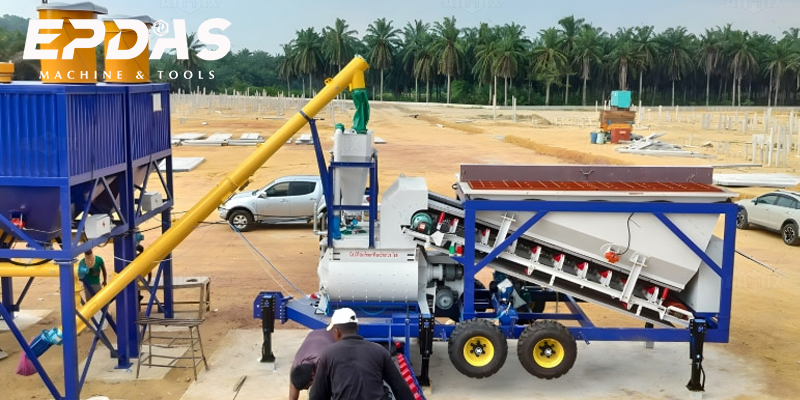
Achieving Profitability with a Mini MCBP Concrete Batching Plant
A concrete batching plant is a highly promising commercial venture with diverse revenue streams. The primary source of income is the sale of ready-mix concrete to construction companies, contractors, and developers. Additionally, services such as concrete pumping, transportation, and on-site mixing can also generate significant revenue. Selling surplus or recycled concrete materials, as well as engaging in equipment rental and technical consulting services, can further diversify income streams.
The key to successfully operating a concrete batching plant lies in proper site selection, efficient management, and a deep understanding of market demand and price dynamics. The small MCBP mobile concrete batching plant is a highly promising commercial project with diversified profit streams. The core profit point lies in the sale of ready-mix concrete. Leveraging the advantages of large-scale production, it provides standardized products to construction companies, contractors, and developers, securing stable orders through long-term strategic cooperation agreements to generate sustainable cash flow.
Value-added service systems are equally indispensable: concrete pumping services can be charged by volume or by duration of operation, combined with in-house fleet transportation to provide a one-stop service from “production – delivery – pouring”; on-site mixing services are tailored for remote or temporary projects, enhancing customer loyalty through flexible response capabilities. In a certain highway project, due to the dispersion of construction sites, mobile mixing stations were used for on-site operations, with service revenue accounting for 25% of the project total.
Resource recycling and derivative businesses open new profit channels: surplus concrete is processed into precast components and road base materials, turning waste into valuable resources; equipment leasing covers mixing plants, transport tankers, etc., combined with technical consulting services (such as mix design optimization and equipment maintenance training) to build a complete industrial chain.
The key to achieving sustained profitability lies in strategic operations: site selection must balance raw material supply radius and market demand density to reduce transportation costs; ERP systems enable intelligent production scheduling and inventory management, keeping raw material wastage rates below 2%; a dynamic price monitoring mechanism is established, combining fluctuations in sand and gravel prices in the futures market to flexibly adjust product pricing strategies, ensuring a stable gross margin of 15%-20%.
When purchasing a Mini MCBP mobile mixing plant, it is necessary to comprehensively evaluate multiple factors to ensure that the equipment meets actual business needs:
Equipment condition: Carefully inspect the wear and tear of the equipment, with a focus on key components such as the mixer and storage silo.
Production capacity: Ensure the mixing plant’s production capacity can meet project requirements to avoid shortages or excess capacity.
Maintenance convenience: Prioritize equipment that is easy to maintain and service to minimize downtime and maintenance costs.
Technology and control systems: Modern control systems significantly enhance material mixing accuracy and production efficiency, making them a key consideration during selection.
Mobility: Evaluate the equipment’s mobility characteristics, including transportation convenience, ease of installation, and disassembly.
Component Quality: Assess the quality and durability of components such as mixers, conveyors, aggregate bins, and control systems, and select products from reputable brands.
Mixing Performance: Understand the mixing efficiency and uniformity of the mixing plant, as well as its ability to handle different types of aggregates and admixtures.
Batching accuracy: Check the accuracy of the batching system, as precise batching is key to producing high-quality concrete.
Environmental factors: Assess the environmental impact of the equipment, including noise, emissions, and dust control measures, to ensure compliance with local environmental regulations.
After-sales service: Consider the spare parts supply, technical support, and after-sales service provided by the manufacturer or supplier. A reliable after-sales network helps minimize losses caused by equipment failures.
Cost Budget: Compare the procurement costs, installation expenses, and operational costs of different equipment to balance initial investment with long-term benefits.
Customization Options: Confirm whether the equipment can be customized to meet project-specific requirements or if additional features and accessory options are available.
Operational Convenience: Select equipment with a user-friendly design and intuitive control interface to facilitate quick mastery by operators and daily maintenance.
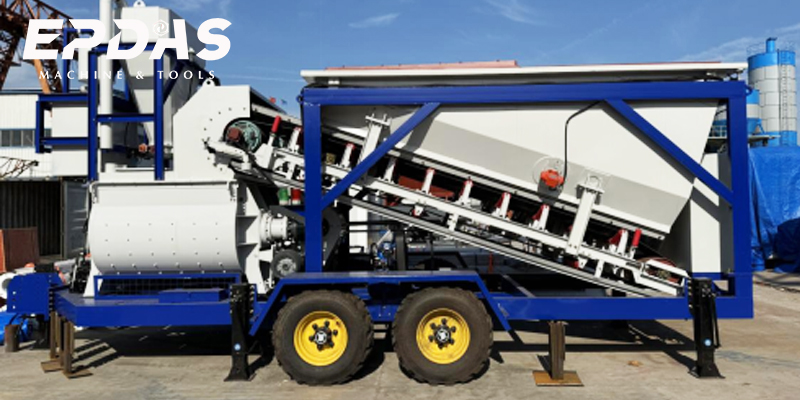
The technology of small-scale MCBP mobile concrete batching plants is continuously evolving and innovating to meet the growing demands of the construction industry.
With ongoing advancements in automation, energy efficiency, material handling, and mobility, manufacturers are introducing products that will further enhance production efficiency, reduce costs, and improve concrete quality.
When selecting a small MCBP mobile concrete batching plant, it is crucial to thoroughly consider factors such as project scale, construction site, and production capacity.
Keeping pace with the latest technological trends in modern mobile concrete batching plants can help businesses make optimal decisions to ensure efficient and cost-effective concrete production processes.
Whether planning to purchase a batching plant or invest in mobile concrete technology, staying informed about the latest industry innovations is a key step toward success.
If you aim to elevate the quality of your construction projects through high-quality concrete, please contact EPDAS to explore our comprehensive range of small mobile mixing plant solutions and request a quote. Our professional team will provide you with comprehensive support to help you select the most suitable mixing plant equipment.
